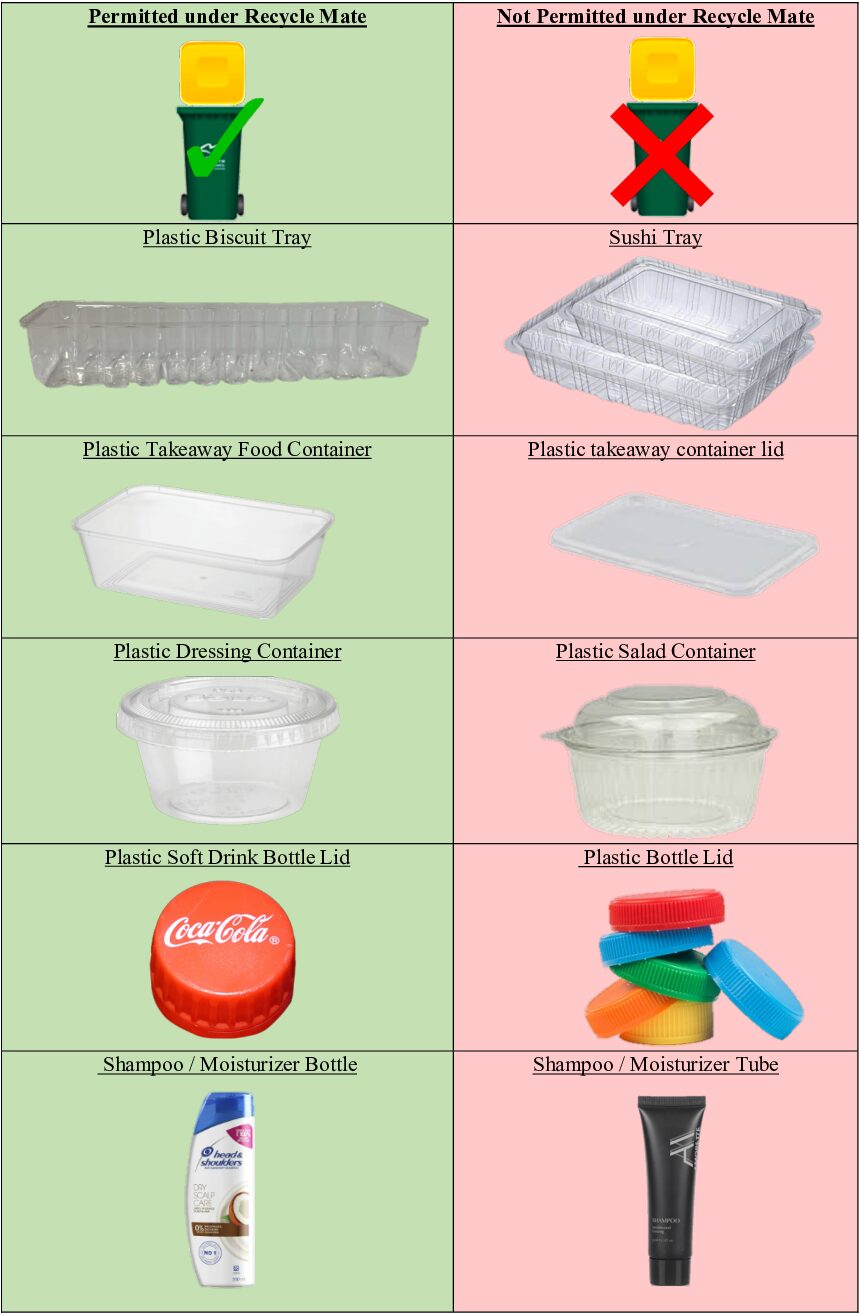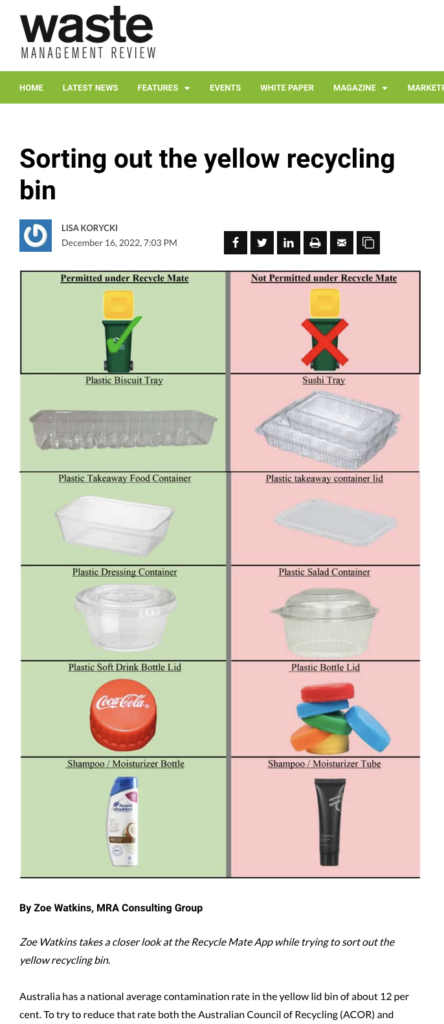Sorting out the Yellow Recycling Bin
By: Zoe Watkins, MRA Consulting Group
To try to reduce it both ACOR and APCO have developed education tools – Recycle Mate App and the Australian Recycling Label (ARL) respectively.
This article only deals with Recycle Mate. I will say more on the ARL in the next article.
Recycle Mate tries to make it clear what is recyclable and what is not but it fails at the grey boundary. What do I mean by that? It fails to provide a clear line between what is recyclable and what is not.
For some packaging, knowing what is recyclable, is easy. Think drink containers, paper and cardboard. But when it comes to rigid plastics and other newer packaging products it gets hard. Even more so since Recycle Mate does not show example photos of the items in question. What is the difference between a Plastic Bottle Lid and a Plastic Soft Drink Bottle Lid? Why can the one be recycled and the other not? The image below contains a few more examples of similar apparent discrepancies.

Our focus was on plastic packaging as people know what paper, cardboard, glass drink containers, and aluminium is. What they can’t distinguish is the vague line in plastic packaging.
The question is what are the criteria behind the ACOR decision to put some products in acceptable and others in not? Right now, we don’t know.
The relevant considerations should be:
- Does the Council contract allow it?
- Do MRFs (materials recovery facilities) recover it cost effectively?
- Are there markets for the material?
- Who is going to pay for it?
ACOR has been trying for years to get a common agreed position for MRF inputs. We are still a long way from that.
We desperately need one standard list of acceptable items for the yellow lid kerbside recycling bin. It should not be left to individual Councils, or MRF operators for that matter, to decide.
It is worth reminding everyone that all yellow bin recycling is funded by Councils. They pay for collection, and they pay for MRF services. Ultimately, what is collected is their decision to specify in their contracts and tenders.
Unfortunately, Councils do not have a representative body to help make these decisions. I have copied below a standard Service Agreement List from the NSW Model Contract for Collection of Yellow bins. You can see it is pretty loose in respect of plastic packaging.
“Recyclables” means the following containers, packaging and products emanating from Service-Entitled Premises:
- Recyclable Paper and Cardboard as defined below;
- Liquidpaperboard cartons;
- Glass bottles and jars;
- Aluminium rigid and semi-rigid packaging;
- PET (1), HDPE (2) and PVC (3) rigid plastic packaging;
- Other rigid plastic packaging including LDPE (4), PP (5), PS (6), Other (7);
- Steel rigid packaging, including aerosol cans; and,
- Any other recyclables as agreed under this Contract.
As a result, we see different Councils allowing different materials and MRFs interpreting what is recyclable without reference to a national agreed list.
No wonder residents are confused.
The lack of alignment with APCO’s Australian Recycling Label (ARL) makes the situation even more complicated. The answer is for Councils, the ultimate consumer of yellow bin recycling services, to set the ground rules via standard contracts and tenders. That requires local Government to set up a representative body to work with MRF operators and the recycling industry and agree, build and fund common systems across Australia.
Zoe Watkins is the Administration Officer at MRA Consulting Group. She has always had a keen interest in waste and recycling and now that her works allows her access to waste experts, she enjoys picking their brains to find answers to the common questions that everyone has but didn’t know who to ask.
This article has been published by the following media outlets:




